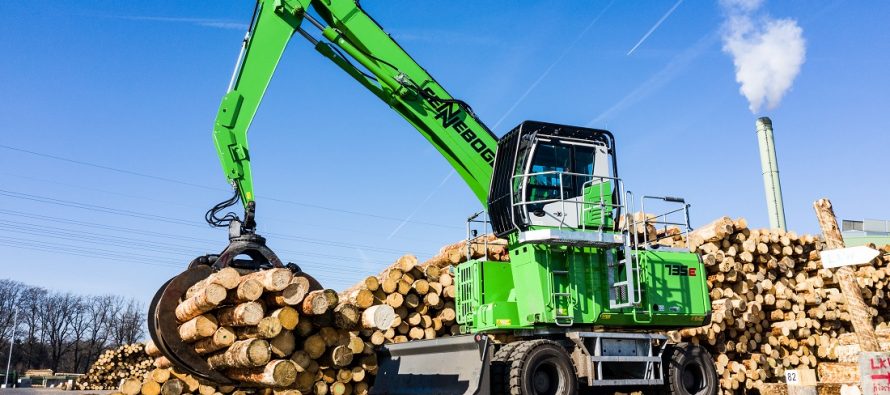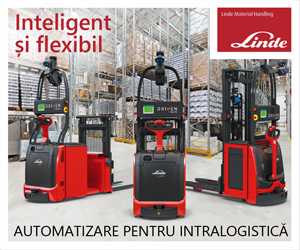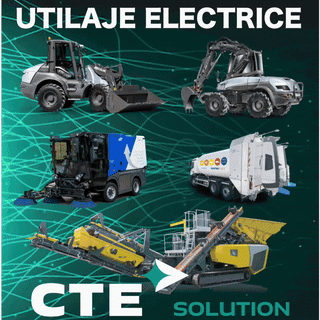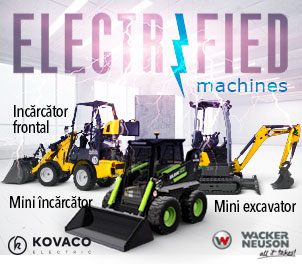Sennebogen develops Pick & Carry material handler with electric travel drive

Related Articles
Sennebogen presented a world premiere in electrification at Bauma 2019. In Munich, Sennebogen showcased a new electric drive version of the diesel-hydraulic Pick & Carry material handler that is so popular with the timber industry. The prototype is currently being field tested and will be ready to go into production by the end of 2019.
When it comes to mobile timber handling, many customers around the world depend on the reliable Pick & Carry material handler from Sennebogen. These machines are mainly used in log yards to organize and sort, and to feed saw mills. The 7 series machines have been designed to run continuously. Electric solutions, such as those typically used in stationary timber manipulation, have not been possible due to the long traveling distances involved. At Bauma, Sennebogen presented the first machine with a new drive concept. All the work process still operate hydraulically, driven by an efficient stage 5 diesel engine, whilst the undercarriage travel drive is electric.
 Joint development project with Bosch Rexroth
Joint development project with Bosch Rexroth
Bosch Rexroth and Sennebogen, long-term partners in drive and application technology for material handlers, collaborated to develop this electric travel drive. The system solution is based on Bosch Rexroth components, is being jointly developed into a marketable product, and will be launched by Sennebogen under the name ‘Green Efficiency Drive’. The Pick & Carry material handler 735 E will be the first machine to contain the series production technology for electric travel.
Up to 30 % more efficient thanks to the electric travel drive
The Pick & Carry machine can already switch continuously between acceleration, braking, and driving under load and this provided options for improving the use of the available energy. The new drive concept consists of two electric drive engines in the undercarriage which are supplied with power by a generator operated by a diesel engine. In addition to the increased efficiency and lower consumption of this design, the development team has also managed to achieve a reduction in noise levels and dynamic drive and braking in the pilot production. Initial applications saw efficiency increases of up to 30 % compared to the previously used diesel-hydraulic drive. The machine has already been very convincing in field tests.







